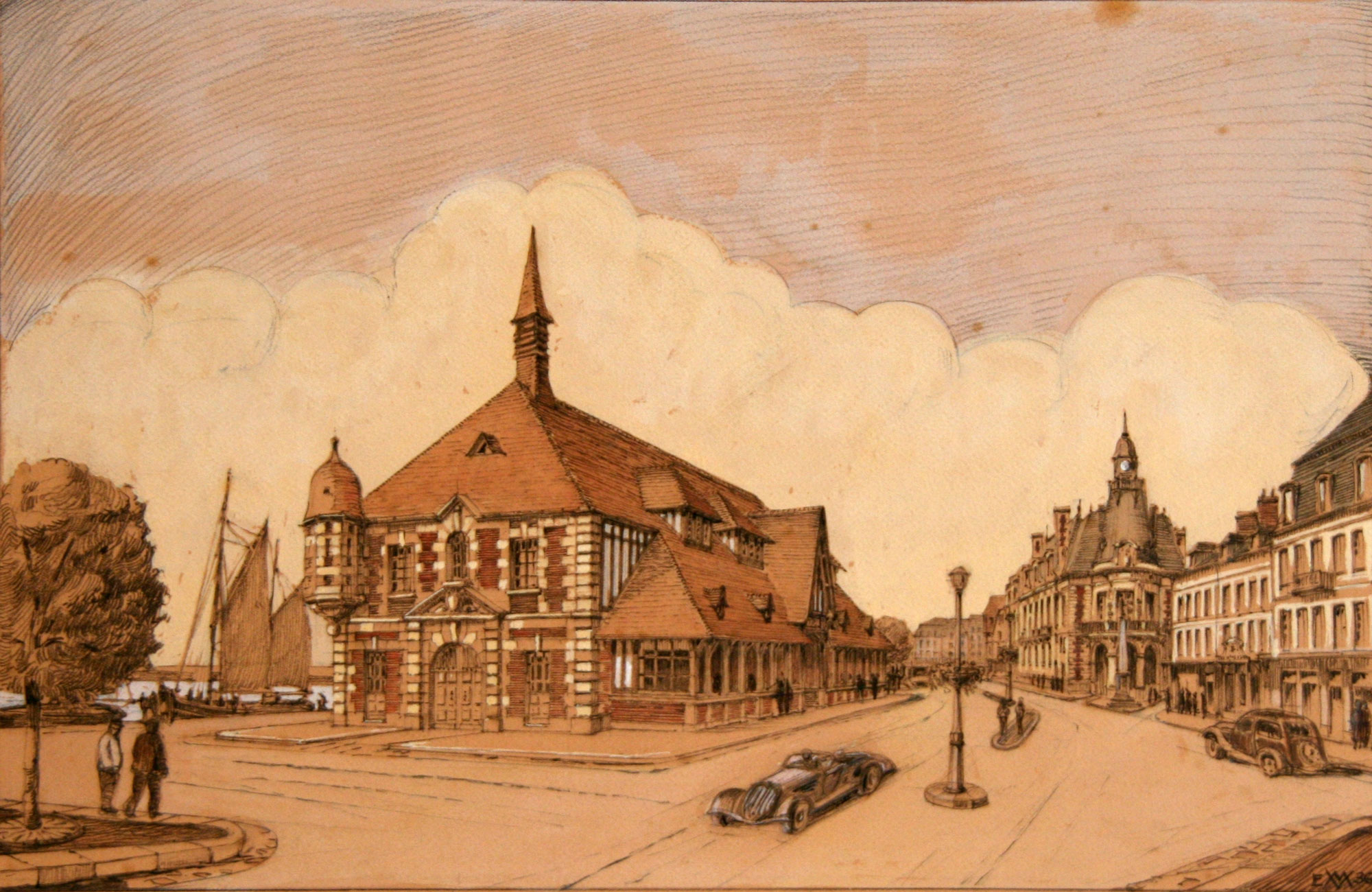Intégrée dans un vaste chantier d’élargissement du quai ayant pour objectif de créer une large avenue à quatre voies longeant la Touques, la construction de l’actuel marché aux poissons fit l’objet d’un concours lancé en 1935, dont le cahier des charges exigeait une référence au style régional, pans de bois et couverture en tuiles.
Lauréat du concours, l’architecte trouvillais Maurice Vincent a conçu un vaste bâtiment à large toiture à deux pans, s’inspirant de la Lieutenance à Honfleur, comme le montre l’échauguette qui orne sa façade sud. Construite en un temps record, à peine six mois à partir d’avril 1936, cette nouvelle poissonnerie normandisée a fait d’emblée l’unanimité ; elle est inscrite à l’inventaire des Monuments historiques depuis 1992.
Ravagée par un incendie criminel en septembre 2006, ses poutres et ses fermes porteuses, faites en ciment armé et non en bois, ont résisté aux flammes, lui évitant d’être totalement détruite. Reconstruite à l’identique, elle constitue assurément, en dépit de sa jeunesse, un élément majeur du patrimoine architectural néo-normand du quai.
Antérieurement deux autres poissonneries l’avaient précédée : une petite halle en bois édifiée dès 1843, remplacée en 1881 par une halle en fer.

Anonyme, Trouville, la poissonnerie, vers 1912. Coll. Musée Villa Montebello. 
Eugène Maurice VINCENT, Trouville, la nouvelle poissonnerie, aquarelle sur papier. Coll. Musée Villa Montebello.
Anonyme, La première poissonnerie de Trouville, vers 1860 – 1870. Coll. Musée Villa Montebello.
The Fish Market
Integrated into the road project for the main boulevard, today’s fish market started with a competition in 1935 commissioned to recall the style of the region with wooden roofs and roof tiles.
The contest’s winner, an architect from Trouville named Maurice Vincent, designed a long building with a wide roof, inspired by the Lieutenance in Honfleur. Built in a record time, hardly 6 months from the start of construction in April 1936, the new Normandy inspired fish market had pleased the crowds unanimously – it is recorded in the Historical Monument’s register since 1992.
Burnt down by act of arson in September of 2006, only its pillars and doors (made of cement and not wood) were savaged. Rebuilt identically to its original form, it stays an important architectural element of the region’s history.
Before the design we see today, the market had two other designs: The first was a small wooden hall built in 1843 and the second was an iron hall built in 1881.

